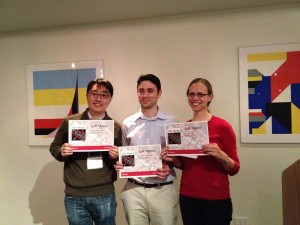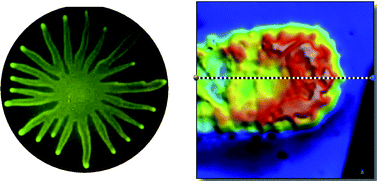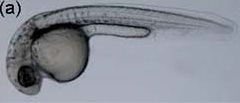Read the most popular Review Articles of 2011 for free today
Self-assembly of amphiphilic peptides
I. W. Hamley
Soft Matter, 2011, 7, 4122-4138
DOI: 10.1039/C0SM01218A
Stimulus responsive core-shell nanoparticles: synthesis and applications of polymer based aqueous systems
Olivier J. Cayre , Nelly Chagneux and Simon Biggs
Soft Matter, 2011, 7, 2211-2234
DOI: 10.1039/C0SM01072C
Cellulose nanowhiskers: promising materials for advanced applications
Stephen J. Eichhorn
Soft Matter, 2011, 7, 303-315
DOI: 10.1039/C0SM00142B
Polylactide (PLA)-based amphiphilic block copolymers: synthesis, self-assembly, and biomedical applications
Jung Kwon Oh
Soft Matter, 2011, 7, 5096-5108
DOI: 10.1039/C0SM01539C
Morphology of polymer-based bulk heterojunction films for organic photovoltaics
Matthias A. Ruderer and Peter Müller-Buschbaum
Soft Matter, 2011, 7, 5482-5493
DOI: 10.1039/C0SM01502D
Stimulus responsive nanogels for drug delivery
Liusheng Zha , Brittany Banik and Frank Alexis
Soft Matter, 2011, 7, 5908-5916
DOI: 10.1039/C0SM01307B
Covalently cross-linked amphiphilic block copolymer micelles
Cornelus F. van Nostrum
Soft Matter, 2011, 7, 3246-3259
DOI: 10.1039/C0SM00999G
PNIPAM microgels for biomedical applications: from dispersed particles to 3D assemblies
Ying Guan and Yongjun Zhang
Soft Matter, 2011, 7, 6375-6384
DOI: 10.1039/C0SM01541E
Nanoparticles with targeting, triggered release, and imaging functionality for cancer applications
Kristin Loomis , Kathleen McNeeley and Ravi V. Bellamkonda
Soft Matter, 2011, 7, 839-856
DOI: 10.1039/C0SM00534G
Hydrophilic and superhydrophilic surfaces and materials
Jaroslaw Drelich , Emil Chibowski , Dennis Desheng Meng and Konrad Terpilowski
Soft Matter, 2011, 7, 9804-9828
DOI: 10.1039/C1SM05849E
To keep up-to-date with all the latest research, sign up for the Soft Matter e-Alert or RSS feeds or follow Soft Matter on Twitter or Facebook.















